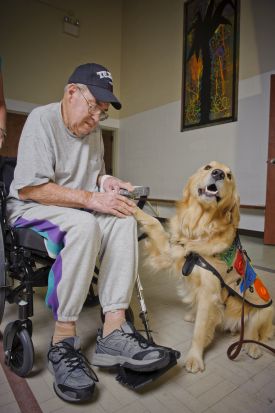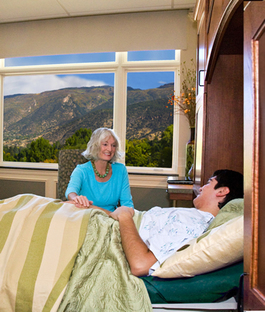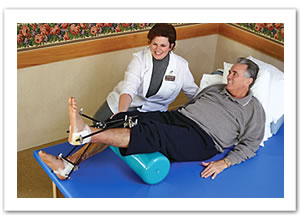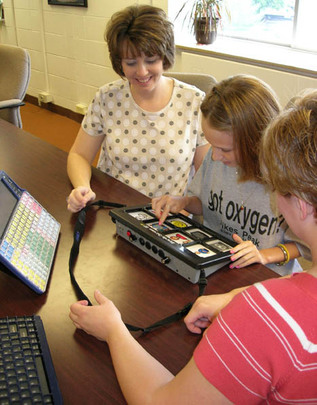Areas of Practice:
The best part about OT is that you have SO many options as to where you work, who you are working with, and the treatment that you are giving.
Areas of Practice
Animal Assisted & Hippotherapy: This would typically be a part time job that would go along with your regular Occupational Therapist job. This allows the patient to interact with the animal and allows them to learn an appropriate way to handle or touch the animal. It also helps the patient learn cooperation, increase their mood and teaches them how to trust. This can be done in groups or simply one on one with the patient. This area of therapy also focuses on ADL's, play ,leisure, social participation, and IADL's, all very important components of OT. Hippotherapy uses a horse to perform therapy by helping with sensory and motor skills.
Mental Health: All areas of occupation would be addressed and this could be a full or part time job. You would meet with the patient however many times a week they need to meet and you could be working in groups with other mentally ill patients or simply one on one. You would be helping the patients with behavior control, safety precautions, and getting them back into their daily routines.
School Systems: Working in the classroom helps the students with education, play and social participation. This can be a full or part time job depending, and a perk is that you only work 9 months out of the year! The sessions are in the classroom about 30-45 minutes each and you will typically work independently.
Acute Care: This means you are working in the hospital at the patients bed side, not usually in a clinic. You are directly working with the patient focusing on ADL's.
Subacute Care: This is for people who don't quite need acute care in a hospital but still need intense therapy. This could be full or part time and typically half hour sessions 3-5 times a week.This allows to patient to work on ADL's IADL's Social Participation and leisure.
Acute Rehab: This is a very intense rehab and the patients have a longer length of stay. You are typically working with a patient for half hour sessions 2-3 times a day, which explains the intensity. This can be a full or part time job and works on the patients ADLs, IADL's, Education, Work, and Social Participation.
Home Care: One option is traveling to people's home to perform therapy. You may be working alone so you will have to travel with all of your equipment but this job typically pays higher. Meeting with a patient 2-3 times a week is typical and you are able to work full or part time.
Outpatient: This can be done in a clinic without the patient staying over night. Meeting with the patient 2-5 times a week is typical and you can work full or part time at the facility. The patient will focus on IADL's, Work, Education, Leisure/Play, and Social Participation.
Private Practice: This is when you work for yourself, owning your own practice. Your schedule is made by appointment and treatment is based on what the particular patient needs.
War & Prisons: You are able to work with patients in the war currently or who have come home with injuries. In prisons you can help the prisoners work on Education, Social Participation, Leisure and Work. You typically meet in groups 1-2 times a week.
Shelters & World Health: For World Health you are able to travel around the world with different organizations and perform therapy. This is a great way to experience and help out different cultures and people. You can also work in shelters to perform therapy depending on the patient. Since homelessness has become a huge issue it is important that they are able to get therapy as well.
Birth to Three: This is working with young children where a disability is already detected. This is important to catch the disability and treat it early in life so that it does not affect them as much as they grow older. You can work with them 1-2 times a week and you will be focusing on play, social participation and ADL's.
Administration: If you do not want to work with a patient you can work with budgets and managing. This job is full time.
Assistive Technology: This is working with technology as a form of therapy. It uses a device in which the patient is taught to help them live their daily lives. This area is very up and coming for Occupational Therapy.
Remember: These are only some of the MANY jobs you can possess as an OT! The list goes on and on...
Mental Health: All areas of occupation would be addressed and this could be a full or part time job. You would meet with the patient however many times a week they need to meet and you could be working in groups with other mentally ill patients or simply one on one. You would be helping the patients with behavior control, safety precautions, and getting them back into their daily routines.
School Systems: Working in the classroom helps the students with education, play and social participation. This can be a full or part time job depending, and a perk is that you only work 9 months out of the year! The sessions are in the classroom about 30-45 minutes each and you will typically work independently.
Acute Care: This means you are working in the hospital at the patients bed side, not usually in a clinic. You are directly working with the patient focusing on ADL's.
Subacute Care: This is for people who don't quite need acute care in a hospital but still need intense therapy. This could be full or part time and typically half hour sessions 3-5 times a week.This allows to patient to work on ADL's IADL's Social Participation and leisure.
Acute Rehab: This is a very intense rehab and the patients have a longer length of stay. You are typically working with a patient for half hour sessions 2-3 times a day, which explains the intensity. This can be a full or part time job and works on the patients ADLs, IADL's, Education, Work, and Social Participation.
Home Care: One option is traveling to people's home to perform therapy. You may be working alone so you will have to travel with all of your equipment but this job typically pays higher. Meeting with a patient 2-3 times a week is typical and you are able to work full or part time.
Outpatient: This can be done in a clinic without the patient staying over night. Meeting with the patient 2-5 times a week is typical and you can work full or part time at the facility. The patient will focus on IADL's, Work, Education, Leisure/Play, and Social Participation.
Private Practice: This is when you work for yourself, owning your own practice. Your schedule is made by appointment and treatment is based on what the particular patient needs.
War & Prisons: You are able to work with patients in the war currently or who have come home with injuries. In prisons you can help the prisoners work on Education, Social Participation, Leisure and Work. You typically meet in groups 1-2 times a week.
Shelters & World Health: For World Health you are able to travel around the world with different organizations and perform therapy. This is a great way to experience and help out different cultures and people. You can also work in shelters to perform therapy depending on the patient. Since homelessness has become a huge issue it is important that they are able to get therapy as well.
Birth to Three: This is working with young children where a disability is already detected. This is important to catch the disability and treat it early in life so that it does not affect them as much as they grow older. You can work with them 1-2 times a week and you will be focusing on play, social participation and ADL's.
Administration: If you do not want to work with a patient you can work with budgets and managing. This job is full time.
Assistive Technology: This is working with technology as a form of therapy. It uses a device in which the patient is taught to help them live their daily lives. This area is very up and coming for Occupational Therapy.
Remember: These are only some of the MANY jobs you can possess as an OT! The list goes on and on...





